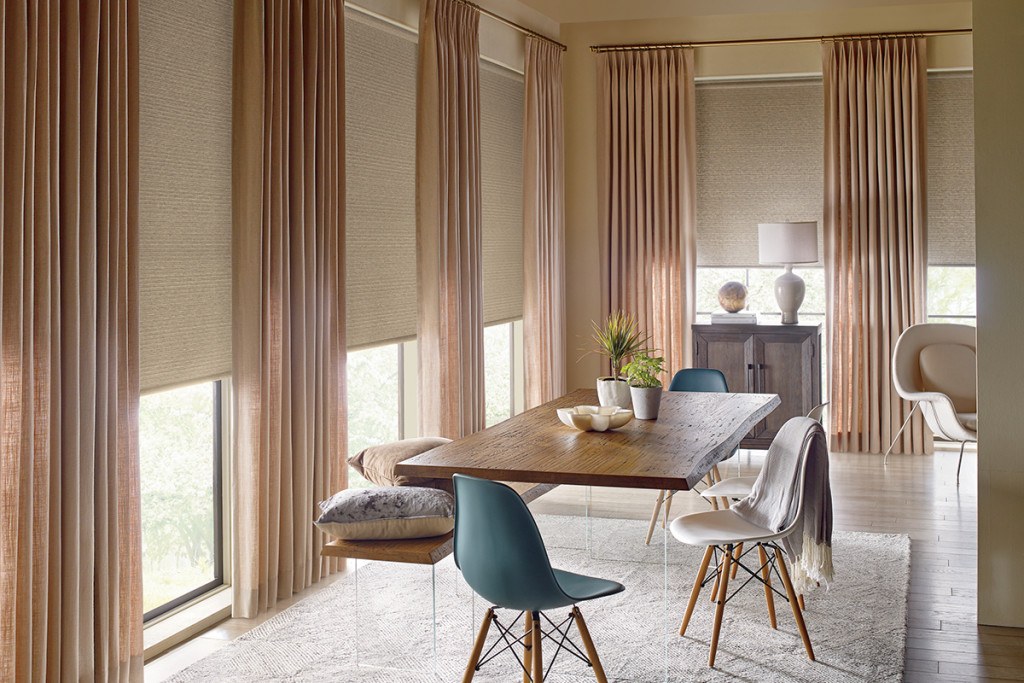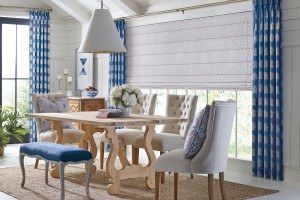The Designer-Approved Styling Trick That Ties a Room Together

The missing element in your living room (or bedroom or kitchen) isn’t another houseplant or throw pillow. For a perfectly balanced space, turn your design efforts to the windows.
“Layered window treatments do the same for a room as a man’s suit jacket does for a suit,” says Lisa Mende, an interior designer from Charlotte, North Carolina. “A man can wear the pants, shirt and tie as an outfit, but it is when the jacket is added that suddenly he looks polished and ready for business.”
In this case, building on a base layer of shades, blinds, or shutters with side panels or drapery provides functional benefits like light control, privacy and energy efficiency. The combination adds an aesthetic edge, too. “The layered window is a huge trend right now,” Mende says. “Designers are using layered window treatments in basically every room in the house.” Ready to get started? Here’s how to add layered window treatments to your home:
Tie open spaces together.
When working with a multiuse layout, cohesive window treatments can act as the design element that ties everything together. Use the same fabric for curtains in the living area as the Roman shade in an adjoining kitchen, for example. Design Studio from Hunter Douglas makes it easy to create a coordinated feel across a floorplan. The highly curated fabric collection is specifically designed to layer perfectly with other Hunter Douglas window treatments.
Control light.
“It is important to capture light when possible and protect against it as necessary,” Mende says. “The best way to do this is by layering a window.” That’s especially true in a bedroom, where light—or lack thereof— can create a welcoming retreat during the day and peaceful space at night. Layered window treatments also insulate against temperature swings, maintaining a more comfortable climate.
Try a base layer of sheers to reduce afternoon glare; drapery lined in blackout fabric can then shut out artificial light after dark. Alternatively, use drapery to filter harsh sun and have shades or blinds block excess glow. Motorized shades from Hunter Douglas can even go up or down based on a schedule set via an app or smart home system.
Make rooms look bigger.
Cramped homes should steal this trick: Mount layered window treatments as high as possible to create the illusion of extra space. Doing so raises the eye and detracts attention from lower ceilings, Mende explains. Installing floor-to-ceiling panels over blinds or shades can also elongate windows and add depth and dimension to a room.
Switch up the vibe.
Updating the window treatments can also refresh a space’s entire look and feel. Dress down a formal dining room by adding woven wooden shades under traditional drapes. “The added texture adds tension to a room with polished cotton and silk,” Mende says. “This is a very popular look.”
Alternatively, coordinate drapery with favorite artwork to make pieces pop. Or add softness and warmth with another popular choice right now, velvet. No matter which direction you go in, layered window treatments can provide that finishing touch that will polish your space.
Transform your home with Hunter Douglas, the premier source for custom blinds, shades, shutters and drapery.
This is a paid partnership between Hunter Douglas and Philadelphia Magazine
